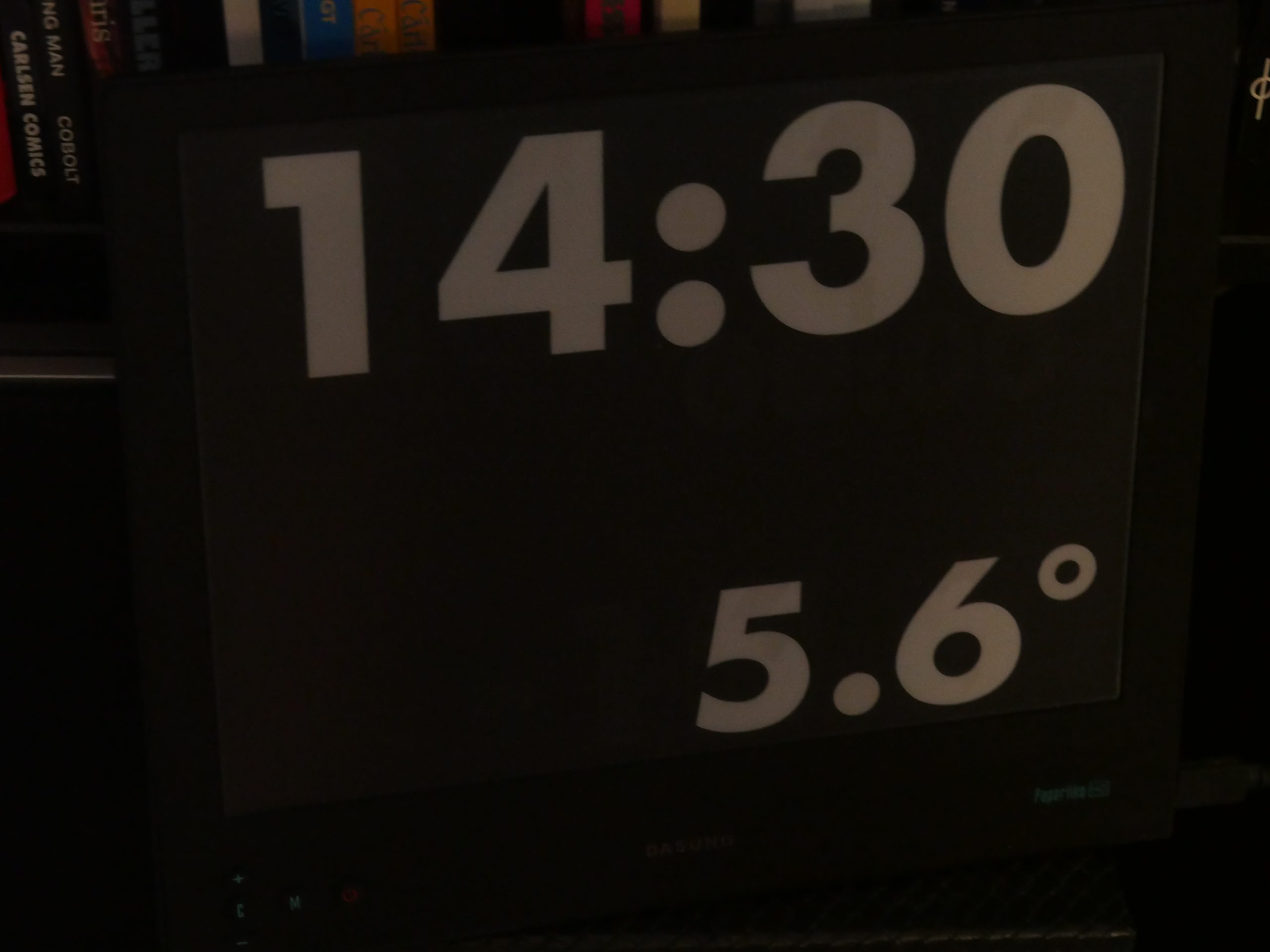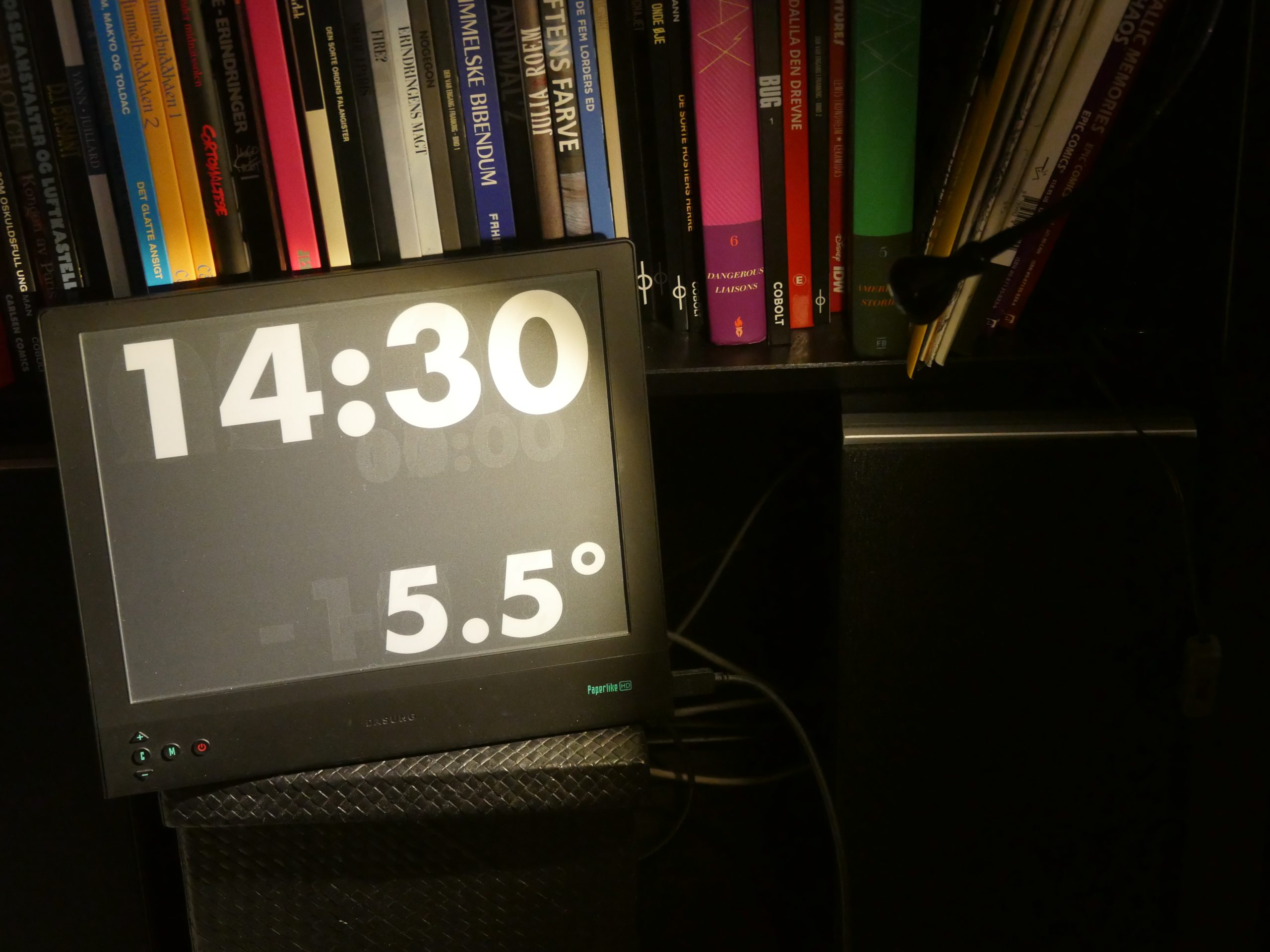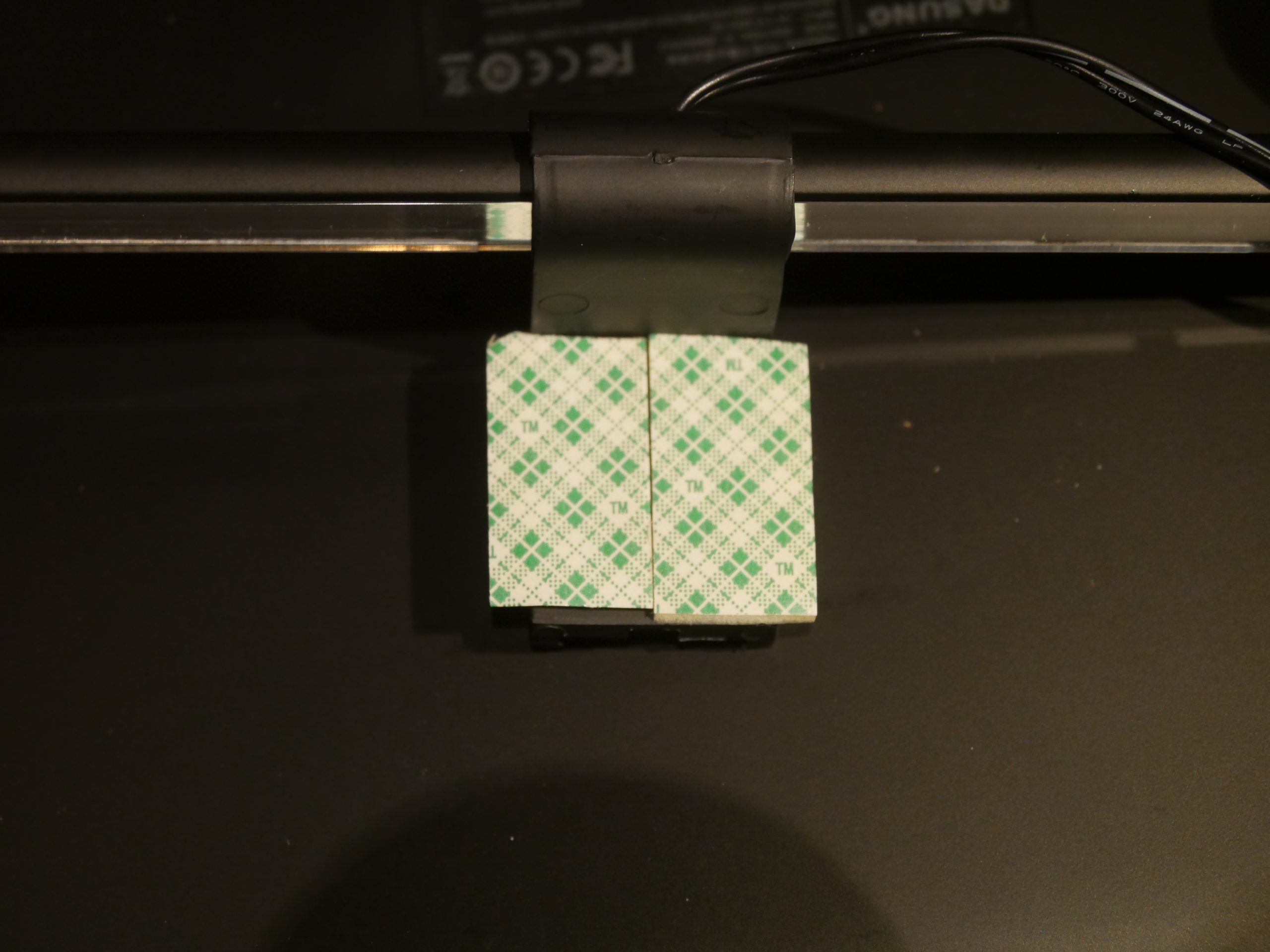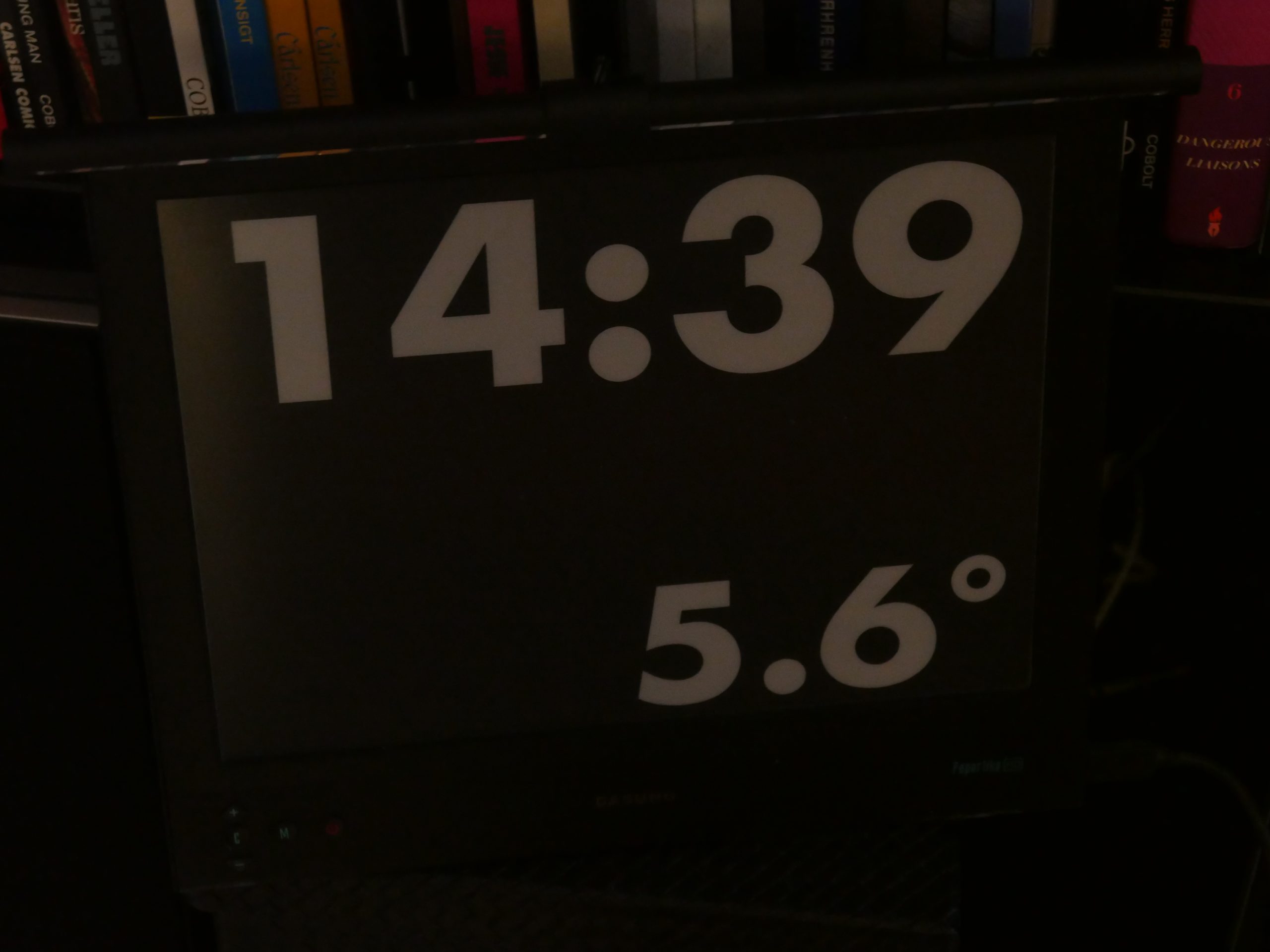Welcome to my new Home Improvements Blog.
As I’m sure you remember from just four years ago, in my quest to create an Emacs-controlled alarm clock that doesn’t emit any light, I set up a Dasung Paperlike HD screen to use as an alarm clock in my bedroom:
I then realised that er there’s no way to actually see what time it is in the middle of the night, because it’s an e-ink display, so I put a lamp (controlled via Nexa from a button next to my bed) on the shelf above it and said “there. I did it!”:
This worked fine, of course, but the light is too bright and it looks wonky, so after just procrastinating for four years (i.e., a quick process for me), I decided to do something about it. So what about one of those lamps people use for paintings, eh? It’s 150lm, so it shouldn’t be too bright…
But how to fasten it?
Double sided adhesive tape, of course. I’m no amateur!
(The lamp is all plastic and weighs next to nothing.)
So here it’s mounted…
And here’s what it looks like in the middle of the night from my bed. (Note: Emulated time.)
So… I guess that worked? It’d be nice if the LED lights weren’t visible at all, and perhaps it should stick out more from the screen… Unfortunately, it doesn’t allow adjusting the angle, and it can’t really stick out more than it does.
Mission accomplished!






Put some craft paper in front of the light for diffusion. “Wax paper” it’s called here, for example. Needs to be thin so light does come through. Actually waxing or oiling paper to close the “pores” (?) can help, too, to absorb less light.
I don’t actually need the light that’s being projected forwards (if anything, there’s too many lumens), so I’m thinking about just using some matte black paint (perhaps car lacquer?) to paint off the forward-facing bits…